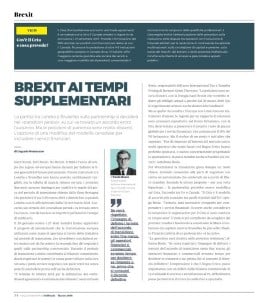The dispute between London and Brussels on their future partnership will be settled in the «transition period», on which an agreement needs to be found within the autumn. But the starting positions are very far apart. An option may be that of adjusting the Canadian model to include financial services. Paolo Besio analyses the situation in an interview with Focus Risparmio.
“The October 2018 deadline for the definition of the «withdrawal agreement» is extremely challenging” commented Paolo Besio, International Tax and Transfer Pricing Partner at Bernoni Grant Thornton. “Positions remain distant, with the hard Brexit fringe willing to reduce contractual commitments starting from 29 March 2019. London will have to face also domestic negotiations”.
The City is determined to maintain its role as global financial services centre, accounting for 10% of the British GDP. “In order to remain in the single market, many businesses based in the UK have already moved, or are planning to do so, to EU member States despite their higher taxation” declared Paolo Besio.
According to the latest proposals, the partnership could follow the Ceta model, i.e. the agreement in place between EU and Canada. “Ceta is the most advanced model agreement among those entered into by the EU”, explained Besio, “nonetheless it will have to be integrated to include financial services. Timing also needs to be taken into accounts: Ceta negotiations lasted over five years”.
London is willing to maintain the free movement of capital, but Brussels reasserted the impossibility of a partnership «à la carte». “The issue will be discussed in the next few weeks. If the commitment to define the terms of the transition agreement by the end of March will be respected, financial and commercial players will have time to decide whether or not to remain, before the divorce will be effective”. The impression is that the UK, an importing country with a trade balance deficit of £ 12.2 billion and a 3% inflation rate, cannot push it too far.


